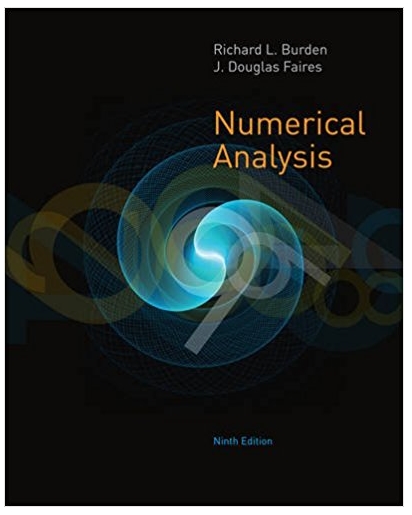Answered step by step
Verified Expert Solution
Question
1 Approved Answer
uiz 7 (Correlation) Hints For questions asking you to calculate a correlation coefficient between two variables, you can use the Correlation tool within the Data
uiz 7 (Correlation) Hints For questions asking you to calculate a correlation coefficient between two variables, you can use the Correlation tool within the Data Analysis menu, or, use the Excel function correlation (Formulas > More Functions > Statistical > CORREL; Make sure you understand the difference between a positive correlation between two variables (as one increases, the other also increases) and a negative correlation between two variables (as one increases, the other decreases, i.e., they move in opposite directions); Note the caveats on p. 566 of the textbook about \"Cause and Effect Interpretations\": \"...because two variables are correlated does not guarantee a cause and effect situation\". On the top of p. 564, notice how the null and alternative hypotheses are stated when we are testing the hypothesis that a correlation exists. If we are testing the hypothesis that a positive correlation exists, we would write the alternative hypothesis as: Ha: p > 0. If we are testing the hypothesis that a negative correlation exists, the alternative hypothesis would be: Ha: p < 0. Notice that we use \"p\" (Greek letter \"rho\") to denote the population correlation coefficient. R represents the sample correlation coefficient. When testing for the significance of a correlation coefficient, first calculate the actual correlation, count your sample size (the number of pairs of data, in this case n = 40), determine your critical value based on your significance level (for example, 1%), your degrees of freedom (n - 2), and whether you have a two-tailed test, a left-tailed test, or a right-tailed test. On p. 564, figure 14.5 shows a critical t value of -2.228 and + 2.228. This is because the alpha level in this problem is 5%; since this is a two-tailed test (Ha: p not equal to zero) we want to split the 5% significance into two tails....so we want a critical t-value that will give us 2.5% in each tail. To find the critical value, we can use Appendix F (Values of T) on p. 823 to look up our critical value. To use this table we need to know what the degrees of freedom (df) are (n - 2) (the df for the example on p. 564 is 12-2 = 10 df, and we want 2.5% or .025 in each tail. In Appendix F, where the df = 10 column intersects with the \"One Tail .025\" row, we see a critical value of 2.2281. This is what you see in either tail of figure 14.5 on p. 564. Next, you need to calculate your t-value based on the data (formula 14.3 on p.564). In this example, their calculated t is 4.752 (this is called your \"test statistic\"), which is larger than your critical t value of 2.228, so we reject the null hypothesis...there is a significant positive linear relationship between the two variables. Happiness A random sample of 40 countries was selected. For each of the countries, the variables described below was collected. Variable Happy EcoFee GDPpc Unemp Life Risk Description An index (0 to 10) of sbujective wellbeing An index (0 to 100) of economic freedom Gross Domestic Product per capia ($) Unemployment rate (%) Average life expectancy (years) Risk Rating (1 = low, 2 = mediam, 3 = sensitive, 4 =high) countries, the variables described below was collected. Source http://worldhappiness.report/wp-content/uploads/sites/2/2015/04/WHR15.pdf http://www.heritage.org/index/explore?view=by-variables http://www.heritage.org/index/explore?view=by-variables http://www.heritage.org/index/explore?view=by-variables http://www.infoplease.com/world/statistics/life-expectancy-country.html http://www.eulerhermes.com/mediacenter/Lists/mediacenter-documents/Country-Risk-Ratings.pdf Country Albania Algeria Argentina Australia Austria Bahrain Bangladesh Brazil China Colombia Croatia Cyprus Czech Republic Denmark Egypt Finland Germany Greece Guatemala Hong Kong India Italy Jamaica Japan Jordan Malaysia Morocco Netherlands Nicaragua Philippines Qatar Russia Saudi Arabia South Africa Switzerland Thailand UK USA Venezuela Zimbabwe Happy EcoFree GDPpc Unemp 4.959 65.7 9506 16.1 5.605 48.9 7534 9.8 6.574 44.1 18749 7.3 7.284 81.4 43073 5.6 7.284 71.2 42597 4.8 5.96 73.4 34584 7.4 4.694 53.9 2080 4.3 6.983 56.6 12221 6.6 5.14 52.7 9844 4.6 6.477 71.7 11189 10.5 5.759 61.5 18191 17.2 5.689 67.9 25265 15.7 6.505 72.5 27200 7 7.527 76.3 37900 7.1 4.194 55.2 6579 12.7 7.406 73.4 35617 8.1 6.75 73.8 40007 5.3 4.857 54 24012 27.6 6.123 60.4 5282 2.8 5.474 89.6 52722 3.3 4.565 54.6 4077 3.7 5.948 61.7 30289 12.2 5.709 67.7 9048 15 5.987 73.3 36899 4.1 5.192 69.3 6115 12.6 5.77 70.8 17748 3.2 5.013 60.1 5456 9.2 7.378 73.7 41711 6.7 5.828 57.6 4554 7.2 5.073 62.2 4682 7.3 6.611 70.8 98814 0.6 5.716 52.1 17884 5.8 6.411 62.1 31245 5.5 4.642 62.6 11259 25.3 7.587 90 46430 4.4 6.455 62.4 9875 0.8 6.867 75.8 37307 7.5 7.119 76.2 53101 7.5 6.81 34.3 13605 7.6 4.61 37.6 788 5.5 Life 77.96 76.39 77.51 82.07 80.17 78.58 70.65 73.28 75.15 75.25 76.41 78.34 78.31 79.09 73.45 79.69 80.44 80.3 71.74 82.78 67.8 82.03 73.48 84.46 74.1 74.52 76.51 81.12 72.72 72.48 78.38 70.16 74.82 49.56 82.39 74.18 80.42 79.56 74.39 55.68 Risk 4 2 4 1 1 2 3 3 2 1 4 4 1 1 4 2 1 4 1 1 1 2 4 1 2 2 1 1 3 2 1 4 1 1 1 2 1 1 4 4
Step by Step Solution
There are 3 Steps involved in it
Step: 1

Get Instant Access to Expert-Tailored Solutions
See step-by-step solutions with expert insights and AI powered tools for academic success
Step: 2

Step: 3

Ace Your Homework with AI
Get the answers you need in no time with our AI-driven, step-by-step assistance
Get Started


